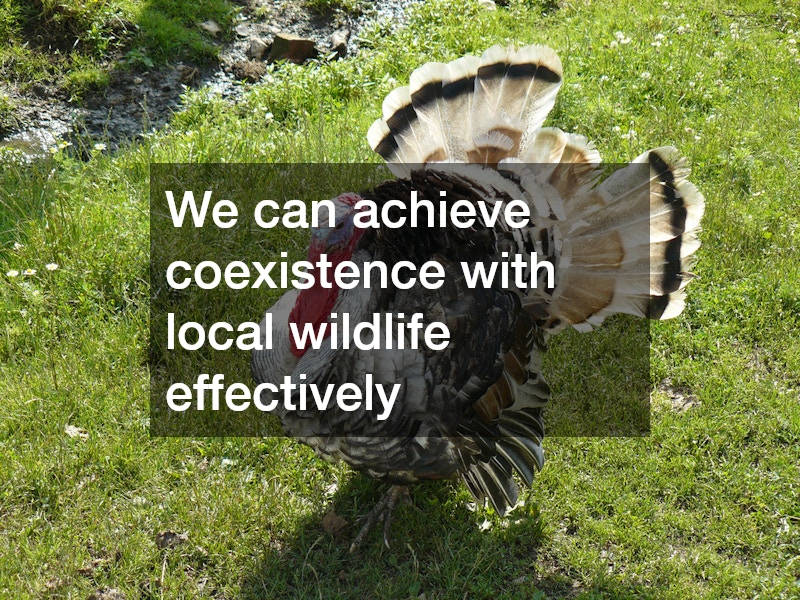Understanding the Need for Wildlife Removal
Wildlife removal becomes necessary when animals encroach on human habitats, posing safety and health risks. Many species have adapted to urban environments, and this often leads to conflicts with human residents. Understanding why wildlife removal is important can help in planning effective and humane solutions, fostering a better coexistence between humans and wildlife.
Recognizing these issues early can lead to timely interventions that benefit both parties.
Wildlife removal is crucial for preventing property damage that can be caused by animals like raccoons, squirrels, and birds. These animals can destroy insulation, wiring, and other structural aspects of homes. Effective wildlife removal helps mitigate such damages, saving homeowners significant repair costs, while also preserving the integrity of the living environment. In addition, preventing damage can also enhance the overall safety and comfort of the home.
Beyond property damage, wildlife can also become a vector for diseases that can affect humans. Wildlife removal ensures these health risks are minimized, creating a safer home environment. Professional wildlife removal services can address these issues efficiently, employing methods that prioritize public health and safety. This proactive approach is essential in safeguarding both human and animal health in urban areas.
The Process of Wildlife Removal
The wildlife removal process begins with a thorough inspection of the premises to identify the type of wildlife and locate entry points. This step is crucial in designing an effective strategy that addresses both immediate issues and future prevention. Professionals are trained to recognize common signs of wildlife activity, which helps speed up the identification process and leads to quicker resolutions. Accurate identification is key to implementing the most appropriate removal techniques.
After identification, the next step involves the humane removal of the animals. This can involve setting traps or using specific techniques tailored to the animal in question, always ensuring their well-being. It’s important to rely on experienced providers for this step, as they are familiar with regulations surrounding wildlife removal and can navigate the complexities involved. Choosing humane methods also reflects a commitment to ethical wildlife management practices.
The final step involves sealing entry points and implementing preventive measures to avoid repeat invasions. This can include physical barriers, deterrents, and ongoing monitoring for activity. Comprehensive wildlife removal services often offer follow-up visits to ensure effective long-term results, reinforcing the commitment to a wildlife-free environment. Regular follow-up is essential to adapt strategies based on changing wildlife patterns.
Choosing a Wildlife Removal Service
When choosing a wildlife removal service, it is vital to ensure they have significant experience with the species common in your area. Additionally, checking for licensing and certifications can provide assurance of their expertise and adherence to humane practices. Reviews and recommendations from past clients can also be a valuable resource in making your choice, helping you select a reputable provider. A well-informed decision can lead to more effective and lasting solutions.
Another factor to consider is the range of services offered by the wildlife removal company. Ideally, they should provide not only removal but also repair and prevention services. Comprehensive services ensure that all aspects of the wildlife issue are addressed, offering peace of mind to homeowners and preventing future problems. This holistic approach simplifies the management of wildlife-related concerns.
Moreover, good wildlife removal companies will also offer education on how to prevent future issues. They can provide advice on maintenance and modifications to reduce the likelihood of future wildlife intrusion. Engaging a reliable service in wildlife removal ensures that your problem is handled professionally and efficiently, fostering a proactive approach to wildlife management. Education empowers homeowners to take preventive measures and reduce future conflicts.
Legal and Ethical Considerations
Wildlife removal is governed by various laws that regulate how animals can be managed, relocated, or euthanized. It’s crucial for removal practices to comply with these legal standards to avoid penalties and ensure ethical treatment of animals. Understanding these laws is essential for homeowners and professionals alike, as it promotes responsible wildlife management. Familiarity with local regulations can also guide better decision-making during wildlife encounters.
Ethical considerations also play a significant role in wildlife removal. Humane methods should be prioritized to minimize stress and harm to animals. Many professional wildlife removal services strive to use non-lethal methods whenever possible and relocate animals to more suitable habitats, reflecting a commitment to ethical practices. This focus on humane treatment can enhance community trust in wildlife management efforts.
Besides legality and ethics, there is a growing emphasis on conservation and the impact of wildlife removal on ecosystems. It is important to balance human needs with ecological preservation, ensuring that removal practices do not adversely affect local biodiversity. By choosing reputable wildlife removal practices, we can achieve coexistence with local wildlife effectively, supporting a healthier ecosystem for all. Promoting conservation in removal practices helps sustain the delicate balance of local ecosystems.
.

